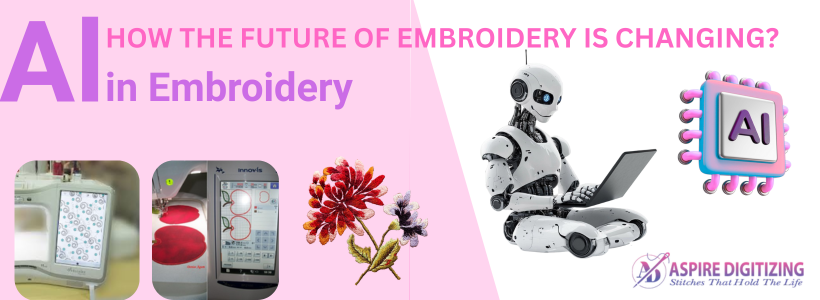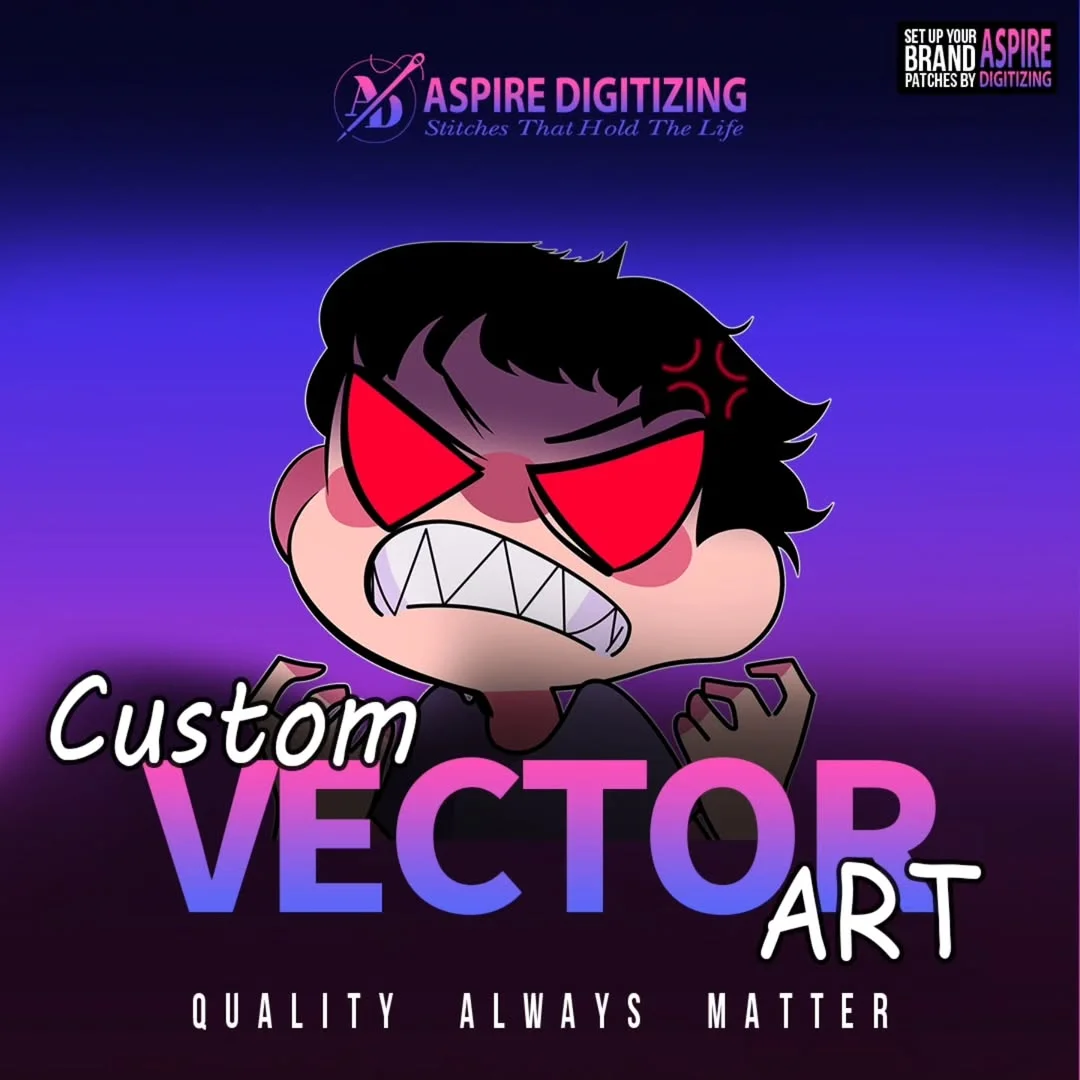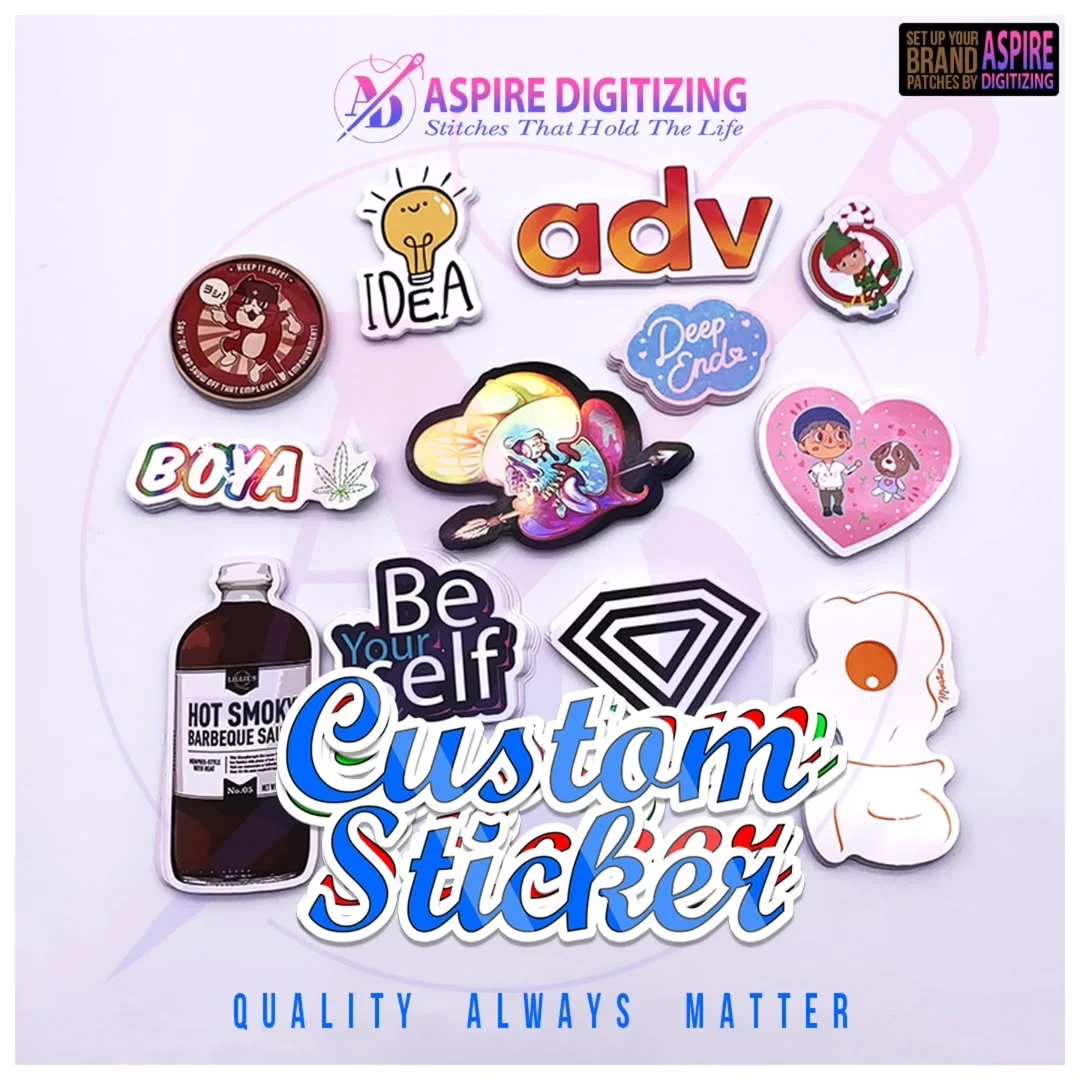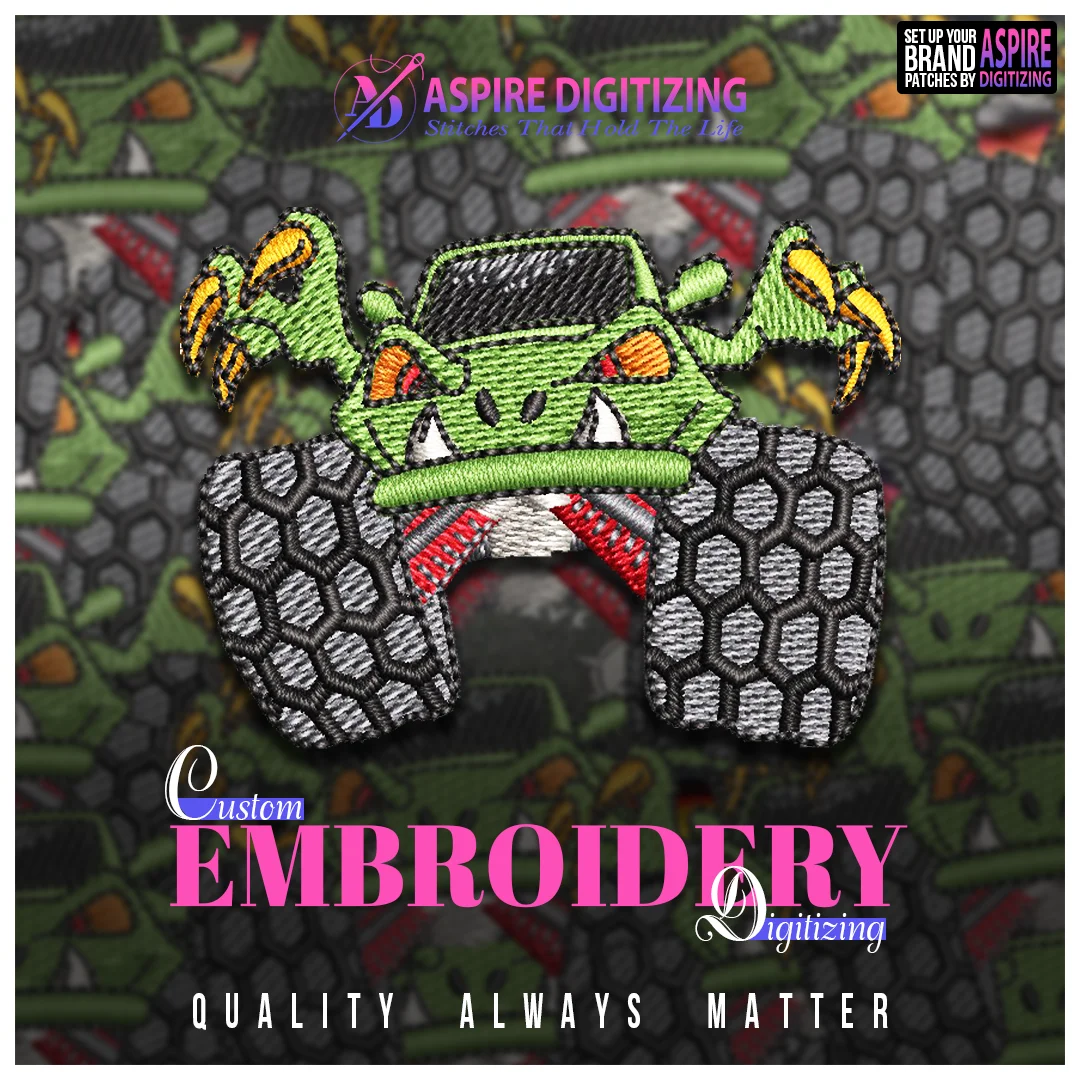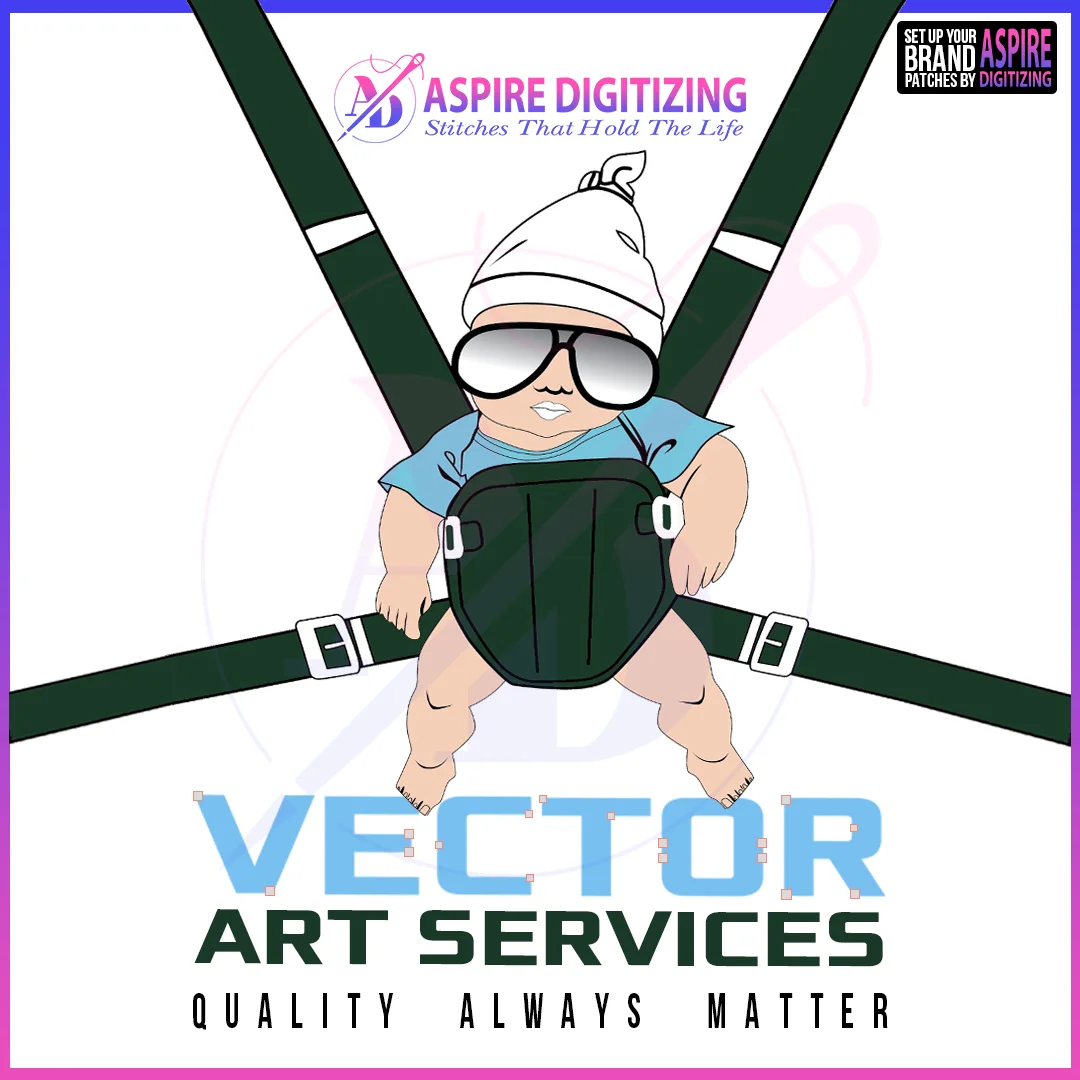Artificial intelligence (AI) is transforming how embroidery machines work, making the entire process more efficient and precise. In the past, embroidery required manual labor and significant time. Today, embroidery machines enhanced with AI can create designs, choose optimal stitches, and correct errors automatically. This leads to faster production, improved quality, and reduced material waste.
Modern embroidery machines can adapt to different fabrics, handle bulk orders, and reduce the need for constant supervision. Even small businesses now have access to advanced technology, enabling them to compete with larger operations. As AI continues to advance, embroidery machines will become even more intelligent, creative, and user-friendly.
What Are AI-Powered Embroidery Machines?
AI-powered embroidery machines integrate artificial intelligence with embroidery software to automate design and stitching tasks. These machines use machine learning and smart algorithms to digitize designs, improve stitch accuracy, and speed up production.
This technology enhances customization, reduces errors, and makes embroidery more accessible to businesses and hobbyists alike.

AI vs. Traditional Embroidery: A Comparison
Embroidery has evolved significantly with AI integration. Traditional embroidery requires skilled operators to create and execute designs, whereas AI-powered embroidery machines can perform these tasks automatically and more efficiently.
Feature | AI-Powered Embroidery Machines | Traditional Embroidery |
|---|---|---|
|
|
|
Design Creation | AI generates and optimizes designs | Hand-designed using software |
Digitizing | Automatic image-to-stitch conversion | Manual pattern creation |
Precision | High accuracy, fewer mistakes | Human error possible |
Speed | Faster, automated production | Slower, needs manual input |
Customization | Quick changes with minimal effort | More time-consuming |
Error Detection | Real-time correction | Manual checks required |
Material Handling | Adapts automatically to fabric types | Requires trial and error |
Labor | Fewer workers needed | Skilled labor required |
Cost | Reduces labor and material costs | Higher costs due to manual work |
Scalability | Easily handles large orders | Time-consuming for mass production |
How AI Is Revolutionizing Embroidery Digitizing
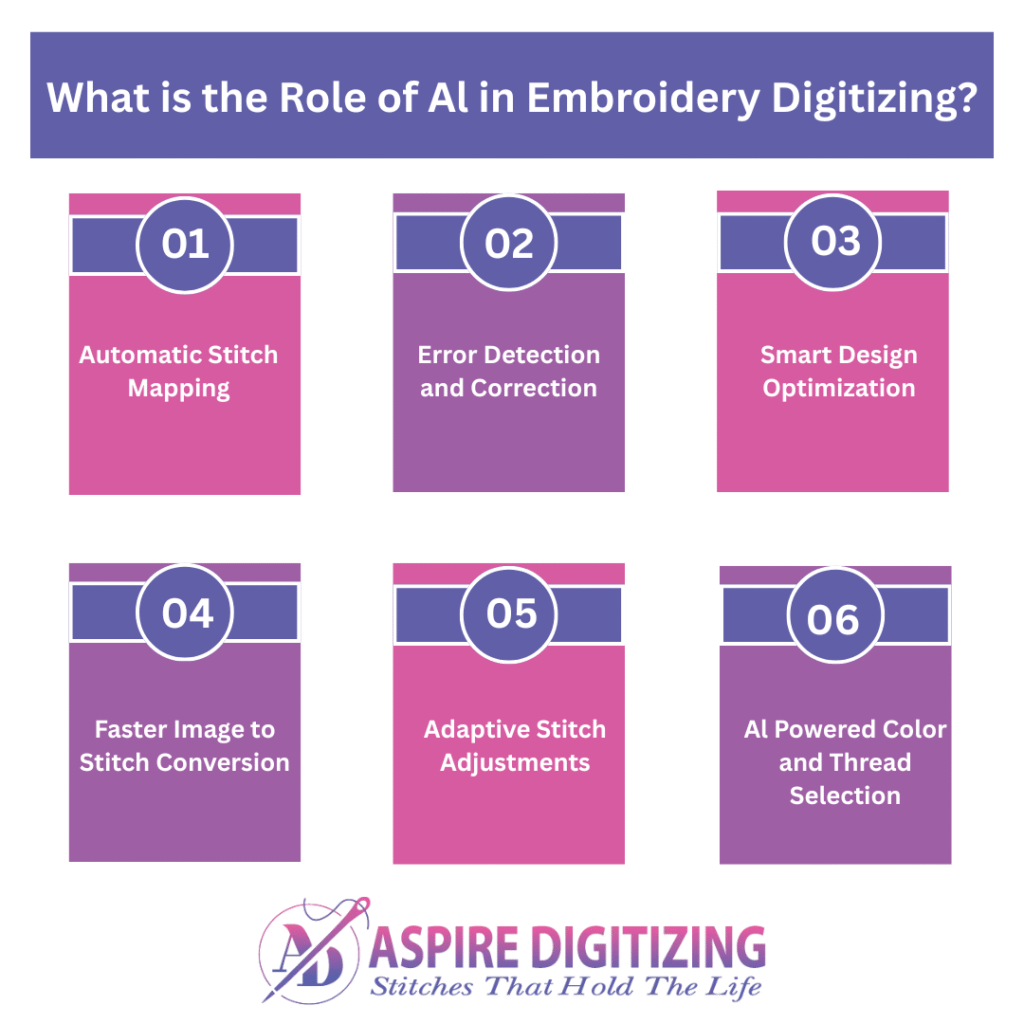
AI is transforming embroidery digitizing by making it faster, more accurate, and simpler. By automating complex steps, embroidery machines can produce cleaner, more efficient outputs with minimal human intervention.
Key Features:
Automatic Stitch Mapping
Real-Time Error Correction
Smart Design Optimization
Rapid Image-to-Stitch Conversion
Adaptive Stitch Adjustments
Intelligent Thread and Color Selection
Seamless Bulk Production Scalin
1. Automatic Stitch Mapping
AI identifies the ideal stitch types and directions for a given design. It maps stitches based on fabric and design needs, enhancing embroidery machines’ efficiency and precision.
2. Real-Time Error Detection
AI detects problems such as overlapping stitches, inconsistent density, or faulty patterns before stitching starts. Embroidery machines adjust automatically to prevent issues.
3. Smart Design Optimization
AI improves design flow, stitch density, and sequencing. This ensures that embroidery machines produce polished results without unnecessary stitching.
4. Faster Image Conversion
With AI, embroidery machines can transform digital images into machine-readable embroidery files in seconds, saving significant time during production.
5. Adaptive Stitch Settings
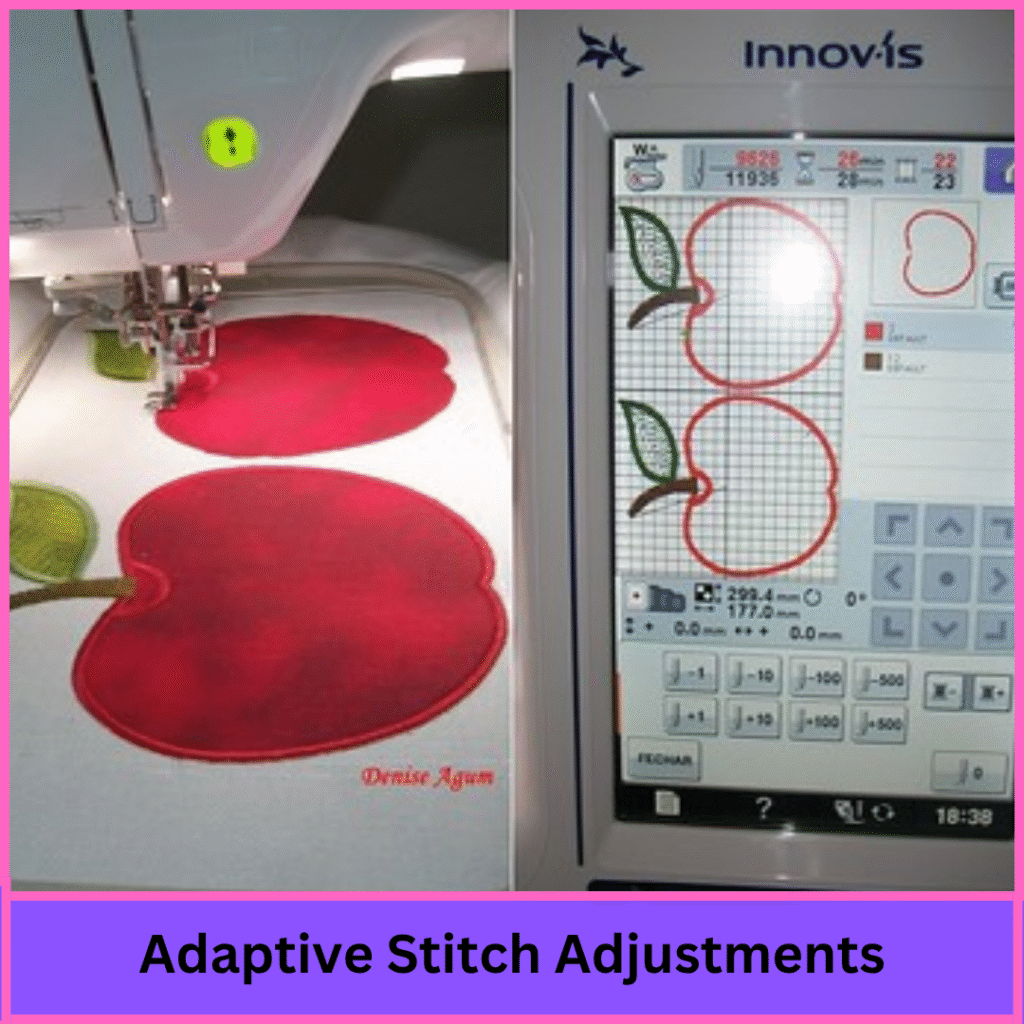
AI allows embroidery machines to detect fabric types—like cotton, silk, or denim—and automatically adapt stitch tension, density, and length to match. This prevents thread breakage, fabric puckering, and poor-quality results.
6. Thread and Color Intelligence
AI suggests matching thread colors and adjusting contrast for visibility on different materials. This helps embroidery machines produce vibrant and accurate designs.
7. Bulk Order Scalability
AI helps embroidery machines generate variations for different fabrics and formats, making bulk production seamless without sacrificing design quality.
The Future of AI in Embroidery Machines
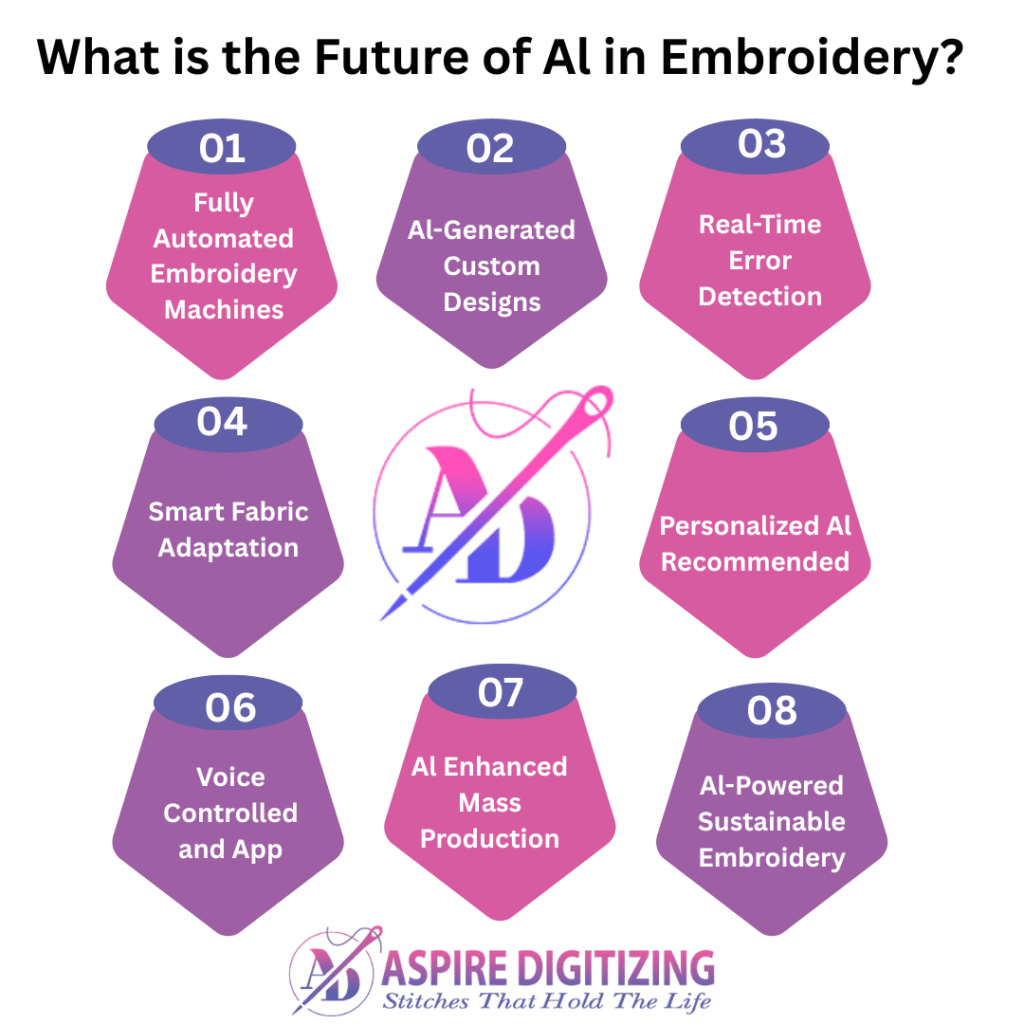
AI will continue to improve embroidery machines by enhancing automation, reducing manual input, and expanding creative possibilities.
For instance, AI determines where to use satin or fill stitches and optimizes stitch flow to avoid puckering. This ensures better embroidery quality and reduces thread usage, cutting costs and waste.
1. Fully Automated Machines
Embroidery machines will independently manage everything from design to stitching, needing no manual adjustments.
2. Custom AI-Generated Designs
AI will let users input themes or preferences, and embroidery machines will generate ready-to-stitch files instantly.
3. Live Error Correction
Future embroidery machines will correct issues like broken threads and misalignments in real time.
4. Smart Fabric Recognition
AI will detect fabric types and adjust needle and stitch settings for optimal output without user input.
5. Personalized Suggestions
Embroidery software will provide tailored stitch types, colors, and layouts based on prior usage data.
6. Voice and App Control

Embroidery machines will respond to voice commands and allow design changes via mobile apps for convenient control.
7. Mass Production Optimization
AI will manage multiple embroidery machines simultaneously, ensuring consistent quality across hundreds of pieces.
8. Sustainable Production
AI will recommend eco-friendly materials and optimize energy usage in embroidery machines to support greener practices.
Challenges with AI in Embroidery Machines
Despite the benefits, AI in embroidery machines comes with a few challenges:
High Setup Cost: AI-powered embroidery machines and software can be expensive.
User Training: Operators may need time to learn the new systems.
System Failures: Dependence on AI means a technical issue can halt production.
Creative Limitations: AI designs might lack a human touch.
Compatibility Issues: Some embroidery machines may not support AI software.
Security Concerns: Digital design files may be exposed to cyber threats.
Customization Gaps: AI may struggle with interpreting abstract or unique concepts.
Maintenance: Regular software and hardware upkeep is necessary for best results.
Traditional embroidery digitizing can be costly, requiring skilled labor and hours of work per design. AI significantly reduces these costs by automating most processes.
With fewer errors and more efficient use of threads and time, AI helps embroidery businesses cut production costs while delivering high-quality results.

Conclusion
AI is revolutionizing embroidery machines, making the process faster, smarter, and more accurate. From simplifying design creation to improving stitch precision, embroidery machines powered by AI are setting a new standard in the industry. Whether you’re a hobbyist or a business, embracing this technology can greatly improve your embroidery quality and productivity.
Looking for professional digitizing services? Aspire Digitizing offers top-tier embroidery solutions with unmatched turnaround times and precision. Try us today and see the difference we can make in your embroidery journey!
FAQs
What is the future of embroidery?
The future of embroidery includes AI-powered embroidery machines, 3D puff techniques, and sleek minimalist logos. These trends are becoming increasingly popular among sports and fashion brands.
Can AI create embroidery files?
Yes, AI can convert images into stitch-ready files. It automates stitch mapping, density settings, and path optimization, making embroidery machines far more efficient.
Can embroidery be automated?
Absolutely. Embroidery machines with AI can digitize, stitch, and even self-correct with minimal input, ideal for high-volume production.
What are the latest technologies in embroidery?
Modern embroidery machines are now equipped with AI digitizing, multi-needle automation, voice controls, and mobile app compatibility. These innovations are making embroidery smarter and more accessible.




